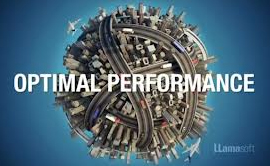 |
January 31, 2013 - Supply Chain Newsletter |
 |
 |
 |
|
||||||||||||||||||||||||||||||||||||||||||||||||||
Supply Chain Guru Predictions for 2013
|
|||||||||||||||||||||||||||||||||||||||||||||||||||
| GILMORE SAYS: |
"There has been a lot of hype relative to this next prediction, but IDC also believes that the "Big Data" era will start to dawn for supply chain organizations in 2013." WHAT DO YOU SAY? |
As usual, I will use this column this week and next to highlight some of the best of each of these gurus. Then in our On-Target newsletter, we will publish the full text of the comments each one has sent me.
And as a slight switch this year, I asked each pundit to in focus on one specific area, such as strategy, transportation, consumer goods, etc.
This year, we begin with Lora Cecere, founder of analyst and consulting firm Supply Chain Insights, author of the new book Bricks Matter: The Role of Supply Chains in Building Market-Driven Differentiation, and a former analyst at Gartner and AMR, among other accomplishments. We asked her to make some predictions relative to the consumer goods to retail supply chain in which she has long had a strong focus in her work.
In general, she says, "Supply chains are morphing from "supply-centric thinking" to market-driven value networks. The focus is moving from vertical to horizontal, from inside-out to outside-in, and on the use of advanced analytics."
She says that "To win, companies need more than tight integration. Instead, they need to invest in synchronization, visualization, and orchestration. It is time to unlearn the practices of the first two decades of supply chain management to learn new ways to build value networks."
Among the seven predictions in this area she sent us, I picked out several for this column (again the full text will be available in On-Target next week).
First, Cecere says a recent plateau in supply performance will drive a rethinking of supply chain excellence.
"Process [manufacturing] companies have lost 1% operating margin and 1% ROA over the last decade, and inventories in food & beverage have grown by 22%. The only supply chain metric that has improved is revenue/employee," she notes. "As growth slows, companies will get serious about driving supply chain excellence."
When it comes to supply chain software, she says that "Satisfaction with transportation and warehouse management applications is high, while satisfaction with planning software is low. As a result, there will be a new growth for Best-of-Breed planning solutions."
Cecere is also one of many pundits, including us here at SCDigest, who are focusing on how Amazon.com is roiling the retail industry.
"Amazon is now taking aim at the "center store" categories, leading to consumer products disintermediation becoming a reality, Cecere says. She also tells SCDigest that "As the Amazon continues to grow market share and carve out a dominant position in the "center-store" categories, retailers will redefine the store to focus more on service and brand-building opportunities. Consumer goods manufacturers will win through designing value-added services to drive traffic to the retail store. This will be about much more than price and variety, including things like walk-in health clinics, beauty make-overs, cooking events, and health and wellness fairs."
Finally, with the current hyper-focus on multi-channel commerce and fulfillment, and increasingly complex fulfillment paths that involve suppliers and third parties, "companies will discover that they need an inter-enterprise system of record for cross-channel fulfillment to enable drop shipment, cross-enterprise available to promise (ATP), and customer-centric inventory allocation."
 Thom Williams, a former trucking industry executive and now consultant and investor in the trucking industry, had to decline on the opportunity to make predictions this year because of investment-related constraints, but he did say that if you want to predict trucking industry changes in terms of capacity and rates, follow the construction industry.
Thom Williams, a former trucking industry executive and now consultant and investor in the trucking industry, had to decline on the opportunity to make predictions this year because of investment-related constraints, but he did say that if you want to predict trucking industry changes in terms of capacity and rates, follow the construction industry.
"I remain convinced that little will change with the transport sector's demand/capacity equation until the residential and commercial new construction markets experience further significant upticks," Williams said. Hmm... that gives us a few ideas on some information we might provide to SCDigest readers.
As usual this year, we are also publishing some of the predictions from the supply chain analysts at firms like Gartner and IDC Manufacturing Insights.
In its "predicts" relative to logistics practices and technologies, Gartner analysts say that achieving high levels of supply chain visibility will continue to be a challenge. How big a challenge? Even by 2016, less than 20% of companies will have achieved end-to-end supply chain visibility, they predict .
The number of touch points in the supply chain is increasingly complex, Gartner notes, raising the bar on visibility needs - and challenges. Although various ecosystems of software vendors claim to provide full end-to-end visibility, "this is not the case," it says. "Alternatively, some companies are building out control towers that incorporate information from various systems" to achieve deep levels of visibility.
Gartner is also on-board with our view that "Cloud-based" software solutions will come to dominate the market.
It predicts that by 2016, more than 40% of new logistics application purchases will be delivered through the Cloud. (We predict that the percentage will actually be even higher than that.)
In areas like WMS and TMS, Gartner says the Cloud/SaaS offerings have not to date typically had the functionality of traditional "on-premise" software, which has been a barrier to adoption for companies with more complex logistics needs.
However, Cloud/SaaS SCM software vendors "continue to enhance their applications by adding more functionality," and "they will soon be viable offerings for even complex and sophisticated logistics organizations," Gartner predicts. It adds that "In general, these [Cloud] solutions are unlikely to wholly replace on-premise solutions for at least several years. Rather, they will complement and coexist with traditional enterprise applications."
IDC comes at it from a more manufacturing-centric perspective, and offers 10 specific predictions. Here are a couple of my favorites.
It predicts, for example, that "resiliency" will become an even higher priority for manufacturers looking to master the "massive multidimensionality" of their global supply chains.
I think I agree. Bit just what does that really mean?
"Supply chain resiliency is about both better managing inputs from the demand side of the supply chain and being more responsive on the supply side," IDC says. Manufacturers will need to manage and optimize across an increasingly broad and complex array of variables, it adds (i.e., "multi-dimensionality").
There has been a lot of hype relative to this next prediction, but IDC also believes that the "Big Data" era will start to dawn for supply chain organizations in 2013.
What is so-called Big Data? It's really about leveraging the vast amounts of supply chain related information that's out there through use of advanced analytic tools to gain insights and uncover hidden patterns. Let's face it, few companies even well leverage their transportation data, let alone cross-functional supply chain information.
However, IDC says, "It is one thing to get big data; it is another thing to "get" big data," meaning that some supply chains will have an epiphany about how such analytics can really drive performance improvement - and some won't.
"2013 will be the year when manufacturing supply chains start to really understand what the fuss is all about," IDC says.
OK, that's it for our first round of predictions. Next week, thoughts from Gene Tyndall, Mike Regan, David Johnson, Marc Wulfraat, David Schneider, Evan Armstrong and me.
We'll see you then.
Any reaction to this set of supply chain predictions? Care to send any of your predictions? Let us know your thoughts at the Feedback button (email) or section below.
![]()
| View Web/Printable Version of this Page |
|
|
|
YOUR FEEDBACK
As usual, received a number of nice comments from our video trip reports from the NRF and ProMat shows the last couple of weeks. Thank you. Most were just "sort and sweet," but had a couple of longer ones. That includes our Feedback of the Week from David Schneider, who kindly sent us a trip report of his own that found some new solutions we missed.
Feedback of the Week on ProMat 2103
This was the second time Automate was across the hall and co-located. They did it in 2011.
I would add one additional theme to your list. Rack "condoms." There were 7 different booths that featured plastic rack post protectors. Each one had a different feature, but the two best came out of the UK. One (located in aisle 1000 or so) showed a series of videos of large industrial trucks hitting plastic guardrails and hand rails. The stuff really took a beating. The reason I use the term "condom" is that one of the people from the UK called their product "Forex for racks". Give this little Palo Alto startup some time. Next year - they may have something ready for the real time. Let's say that there is some interest from some companies that need to unload lots of containers. What would a 30 ctn per minute system that never takes a break do for unloading? What is new about the rack condoms is the material. All are using a safety yellow elastomeric formulation. A very high density HDPE product that is extruded into shape and then cut to size. Two years ago all of the post protectors were steel - bolt on items. Last year there was one company at MODEX that had a plastic article - but it did not look like it would put up with the abuse. Going from no product 2 years ago, one booth at the small show last year, and seven this year is an exploding trend. Each maker has a different way to deal with the filling between the guard and the rack upright. By far, the most impressive was A-SAFE from the UK. Hannibal Material Handling has a new rack design that is going to rock the seismic world. They developed a large gage tubular post that uses moment force connections in both the longitudinal and transverse sections. What this design does is lower the high anchoring, pull out and slab thickness requirements in high seismic zone applications, like California and Memphis. A traditional rack frame consists of the posts with welded cross members and diagonals, making a very stiff structure. In a seismic event, the traditional racks will sway and flex if the motion is longitudinal to the racks. But if the seismic movement is transverse, the very stiff frames can shake the loads off the rack, pull up the anchors, or fail and flip the slab sections. To fight these forces most high seismic application will increase the steel in the posts, increase the foot places, require deeper anchors (6" or more) with epoxy or screw anchor. In many cases the slab ends up getting thicker as the racks get higher - 8" or more. The new design uses bolt connection heavy gage and section moment force beams in the transverse direction, allowing the structure to move with the seismic forces. Able to flex in both the X and Y directions, the structure depends on the strength of the moment force connections to hold together the system. The pull out issues are negated, as is the need for thicker floor slab. This design has a huger cost impact on a new building - taking 2" of slab thickness out of a 1 million sqft building is a major building cost reduction. The design also brings more of the existing leased warehouse inventory to the table for storage over 20' in elevation (there are very large buildings in SOCAL that have 20' storage heights because the slab is insufficient to go higher). The design shifts the upright fabrication to the field, and will reduce the transport costs of a large rack system by at least 40%. The iBot system you featured is very impressive - it blows away the rest of the field. Yes, you can add more pick and replenishment stations - both sides and vertical. Moreover, if you really want to crank the rate - you just have to add more iBots. The mini load AS/RS based systems can't support that. A system can be as tall as 32' and as long as 280', One large module can support 17,000 unique pick bins of 2 cubic ft each.
|
||
| More Feedback on Our Trip Reports | ||
As I manage procurement for more than 1 DC, I always find Mr. Gilmore's trip notes and comments useful. Dan, thank you for sharing your thorough and insightful notes. Steve O'Reilly |
||
Dan - Thanks for spending the time and expense to go to the NRF conference, and reporting back to our community what you found interesting. Yes, it is a "retail focused show", but retail is the end of the supply chain for most of our colleagues and what happens there drives (or should drive) everything that goes on upstream. I vote that you keep going. I was interested in your review of the Manhattan "Store Commerce Activation" solution which allows web based customer orders to be fulfilled from retail brick and mortar stores when practical vs. the DC. This capability, along with in-store pickup, keep the B&M facilities in the loop and can provide rapid 'to door' delivery from local stocks. Not to mention the ability to fulfill an order where the stock is available at a store but not available in the DC.
|
||
Your Video trip reports are absolutely fantastic. I have my whole team watch them to keep up with what is going on out there. Bob Swanson |
SUPPLY CHAIN TRIVIA ANSWER
Q: What early data collection industry pioneer, eventually acquired by Honeywell in 2007, road to fame in the 1980 and 90s by being the main portable terminal/bar code scanning device for FedEx for many years?
A: Handheld Products, whose "Micro-Wand" was a batch data collection device that uploaded from a cradle back at the local freight terminal after drivers returned from scanning bar codes to confirm delivery.
| © SupplyChainDigest™ 2003-2013. All Rights Reserved. SupplyChainDigest PO Box 714 Springboro, Ohio 45066 |
POWERED BY: XDIMENSION
|









